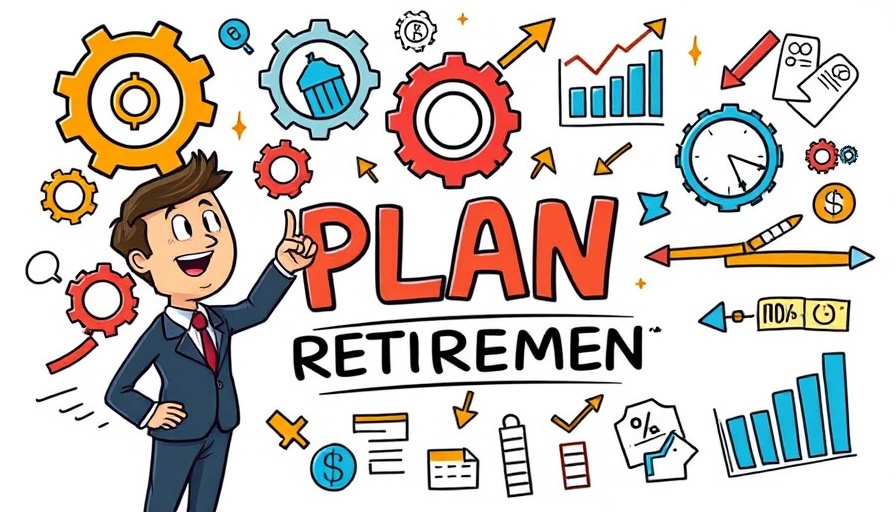
Understanding Your Unique Transition to Retirement
For many business owners, retirement represents a distinct phase colored by years, often decades, of dedication to building a venture from the ground up. Unlike traditional employees who might receive a gold watch upon retirement, business owners experience a more fluid transition. Whether it’s selling the company, passing it on to family, or remaining involved, the shift to retirement demands a recalibration of priorities from business management to personal life management. This unique transition involves significant financial decision-making, requiring a different set of strategies to secure a stable post-retirement life.
1. Redefining Your Budget: The First Step
One of the most crucial financial decisions business owners face during retirement is redefining their budget. This step can be tricky since entrepreneurs are accustomed to variable income streams, often driven by the profitability of their business. Transitioning to a fixed or semi-fixed income can lead to an unexpected budgetary strain.
Start by identifying all potential income sources: Social Security benefits, dividends from investments, rental revenue, withdrawals from retirement accounts, and any business payouts. Once this baseline is established, match it against anticipated lifestyle costs, both essential and aspirational. Many former business owners find themselves underestimating their monthly expenses, influenced by previous habits of reinvesting profits. Adjusting this mindset early can prevent potential financial discomfort.
2. Crafting a Sustainable Withdrawal Strategy
Managing a business's cash flow is one thing; however, personal cash flow in retirement operates under a different set of rules. This makes developing a thoughtful withdrawal strategy critical. A sound plan allows you to stretch your money further while avoiding unnecessary tax penalties.
If you have accounts like a 401(k) or a SEP IRA, consult with a financial advisor to determine what your safe withdrawal rate will be. While many continue to refer to the 4% rule as a guideline, it should be tailored based on individual needs and realities, including health considerations and lifestyle expectations. Be cognizant of Required Minimum Distributions (RMDs) starting at age 73, which can have significant tax implications if not properly planned.
3. Utilizing Reverse Mortgages for Liquidity
A lesser-known yet strategic liquidity tool for retired business owners is the reverse mortgage. This financial product allows you to access the equity stored in your home without the need to sell or downsize. This option particularly benefits those who have invested heavily in real estate and wish to tap into that asset for additional liquidity.
When used judiciously, reverse mortgages can provide a financial cushion, freeing up cash for investments or day-to-day expenses without sacrificing long-term goals. It's essential, however, to consult with an expert to thoroughly understand the potential benefits and challenges of this strategy before proceeding.
4. Adapting Your Tax Strategy for Retirement
The complexities of tax planning shift significantly when transitioning into retirement. Business owners often excel in tax efficiency while running their company, but retirement introduces new considerations—like capital gains taxes and Roth conversions—that can complicate matters.
Rather than focusing solely on minimizing taxes for the current year, aim to create a tax strategy that smooths the overall tax burden across your retirement. Collaborating with a CPA familiar with transitioning wealth can help ensure that you're positioned to make informed decisions about estimated tax payments and withdrawals in the absence of a steady paycheck.
5. Navigating Emotional and Psychological Changes in Retirement
Beyond financial aspects, the psychological toll of retirement can be hefty for business owners. Many find their identity intertwined with their enterprise, making the transition challenging.
It’s crucial to establish a new routine, find ways to remain active and engaged, and explore passions outside of work. This personal growth can be as important as the financial strategies you implement for a fulfilling retirement life.
Take the Next Steps Towards a Secure Retirement
Implementing smart financial decisions as you approach retirement can secure your legacy, maintain your independence, and ensure you enjoy this new chapter of your life. By redefining your budget, developing a sustainable withdrawal strategy, utilizing liquidity options like reverse mortgages, and recalibrating your tax strategy, you can navigate this transitional period with ease.
Ultimately, planning for retirement is about more than just numbers; it’s about cultivating a fulfilling, balanced life after years of hard work.
As you ponder these financial strategies, consider seeking advice from professionals who specialize in retirement planning to further tailor these suggestions to your unique situation. Remember, it's never too early to start planning for your future and ensuring a stress-free retirement.
 Add Row
Add Row  Add
Add 




Write A Comment